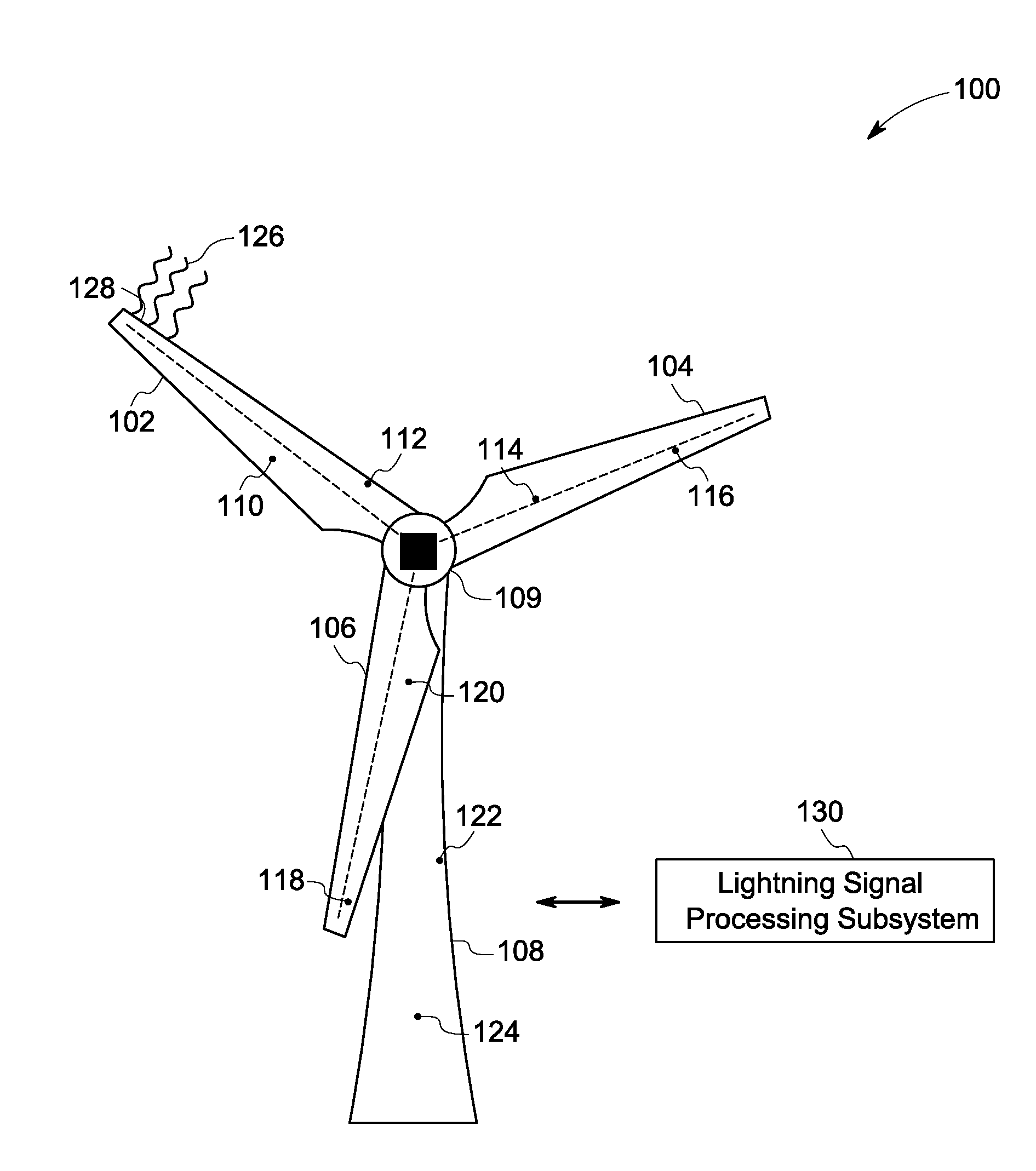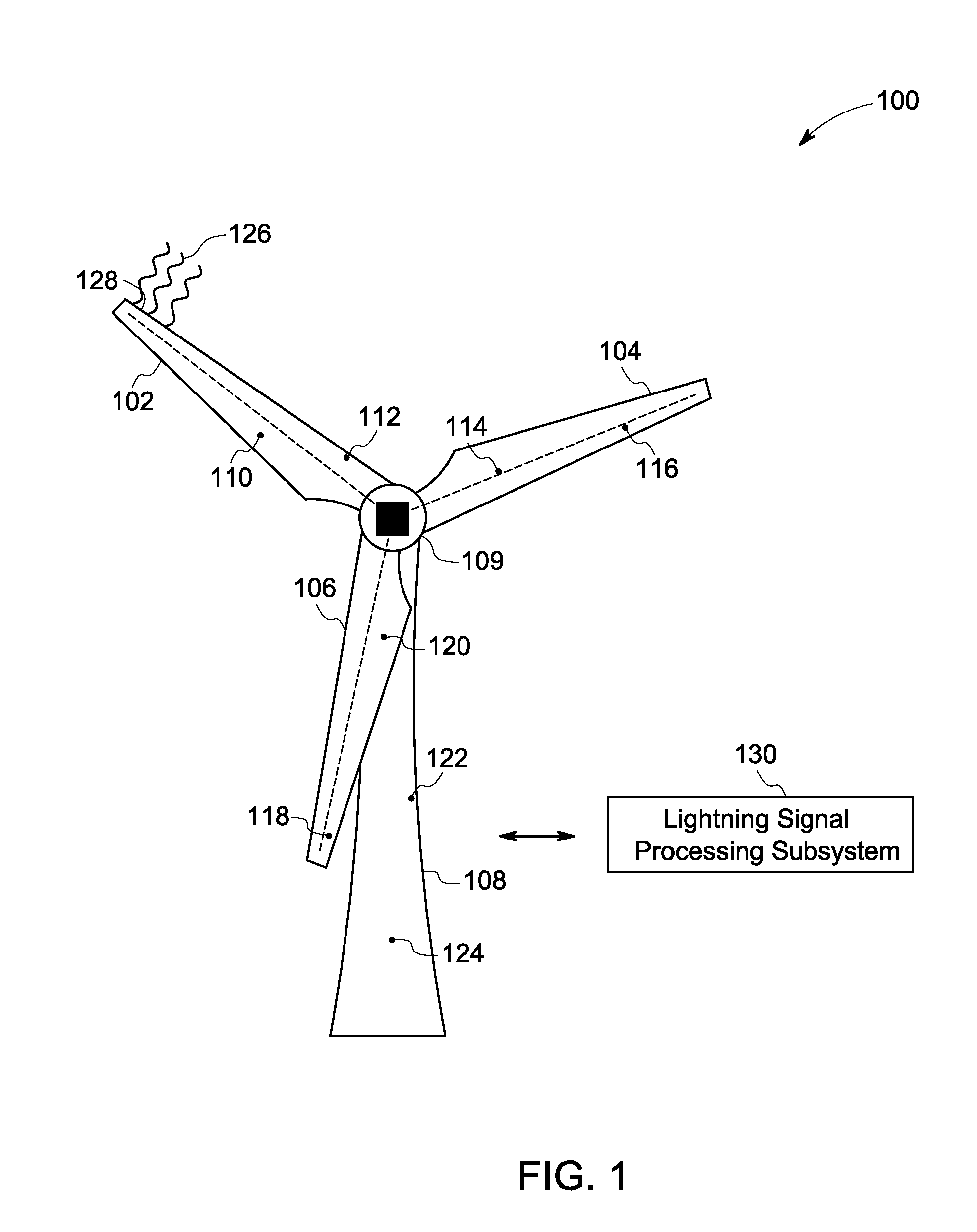System and method for detecting lightning
a detection system and lightning technology, applied in the field of lightning detection systems, can solve the problems of wind turbines, in particular, being subject to a high risk of lightning strikes, and the system cannot detect the number of lightning sequences striking a wind turbine, and the affected blade cannot be automatically identified via use of lightning detection systems
- Summary
- Abstract
- Description
- Claims
- Application Information
AI Technical Summary
Benefits of technology
Problems solved by technology
Method used
Image
Examples
Embodiment Construction
[0018]As will be appreciated, a wind turbine is susceptible to lightning strikes. The lightning strike may damage the wind turbine, and more particularly the wind turbine blades thereby resulting in downtime and repairs. It is therefore desirable to develop a lightning detection system to detect a lightning strike in a timely manner, and hence reduce repairs and downtime of the wind turbine.
[0019]FIG. 1 is a diagrammatical view of a wind turbine 100 including an exemplary lightning detection system, in accordance with aspects of the present technique. As used herein, the term “wind turbine” may be used to refer to a rotating machine that converts kinetic energy of wind to mechanical energy. The mechanical energy may then be converted to electrical energy.
[0020]In an exemplary embodiment, the wind turbine 100 includes a tower 108, blades 102, 104 and 106, a nacelle 109 and a hub (not shown in FIG. 1). In a presently contemplated configuration, the blade 102 includes sensing devices 1...
PUM
 Login to View More
Login to View More Abstract
Description
Claims
Application Information
 Login to View More
Login to View More - R&D
- Intellectual Property
- Life Sciences
- Materials
- Tech Scout
- Unparalleled Data Quality
- Higher Quality Content
- 60% Fewer Hallucinations
Browse by: Latest US Patents, China's latest patents, Technical Efficacy Thesaurus, Application Domain, Technology Topic, Popular Technical Reports.
© 2025 PatSnap. All rights reserved.Legal|Privacy policy|Modern Slavery Act Transparency Statement|Sitemap|About US| Contact US: help@patsnap.com



